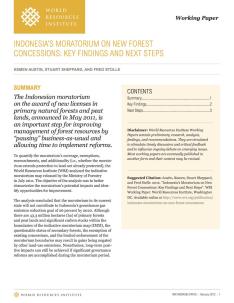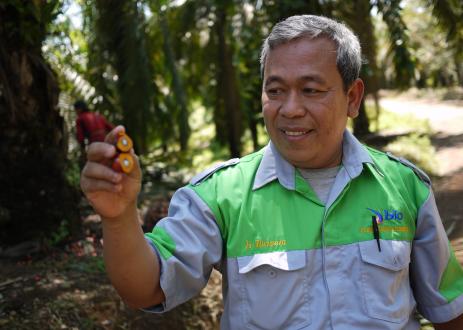Indonesia's Moratorium on New Forest Concessions
Key Findings and Next Steps

Synopsis
This Working Paper analyzes Indonesia's moratorium on new licenses in primary natural forests and peat lands. The research seeks to better characterize the moratorium's potential impacts and identify opportunities for improvement.
Executive Summary
The Indonesian moratorium on the award of new licenses in primary natural forests and peat lands, announced in May 2011, is an important step for improving management of forest resources by “pausing” business-as-usual and allowing time to implement reforms.
To quantify the moratorium’s coverage, exemptions, encroachments, and additionality (i.e., whether the moratorium extends protection to land not already protected), the World Resources Institute (WRI) analyzed the indicative moratorium map released by the Ministry of Forestry in July 2011. The objective of the analysis was to better characterize the moratorium’s potential impacts and identify opportunities for improvement.
The analysis concluded that the moratorium in its current state will not contribute to Indonesia’s greenhouse gas emission reduction goal of 26 percent by 2020. Although there are 43.3 million hectares (ha) of primary forests and peat lands and significant carbon stocks within the boundaries of the indicative moratorium map (IMM), the questionable status of secondary forests, the exemption of existing concessions, and the limited enforcement of the moratorium boundaries may result in gains being negated by other land-use emissions. Nonetheless, long-term positive impacts can still be achieved if significant governance reforms are accomplished during the moratorium period.
Proyek

Forests and Landscapes in Indonesia
Kunjungi ProyekData-driven analysis to support government and civil society actions for effective and equitable land-use in Indonesia.
Bagian dari Forests & Land Use